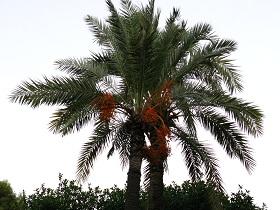Using AI to control energy for indoor agriculture
30 September 2024
Published online 18 August 2013

Scientists have sequenced the genome of a species of that most ubiquitous of symbols of Arab landscapes and one of the world's oldest cultivated trees. The date palm (Phoenix dactylifera L.) can have more than 100 productive years and has played an important socio-economic role since its cultivation in the area between the Euphrates and the Nile River.
A team of researchers from the King Abdulaziz City for Science and Technology in Saudi Arabia, in collaboration with the Beijing Institute of Genomics, have built on earlier work by a Qatari research team to sequence more than 90% of the genome of an important variety of P. dactylifera called Khalas.
Their findings, published in Nature Communications1, added to previous draft genome assemblies of the woody plant species. Using pyrosequencing — a relatively new DNA sequencing method — the researchers determined that Khalas has around 41,660 genes with an estimated length of 671.2 Mb.
The researchers' analyses compared P. dactylifera's genome assembly to that of three other selected varieties (Agwa, Fahal and Skury) to establish genetic variety. They also used RNA data to illustrate the date palm's unique sugar metabolism, which instructs its fruit development and ripening processes.
The almost complete genome sequence of the date palm will add to existing knowledge of the date palm and contribute to efforts to improving the species' yield and fruit quality.
doi:10.1038/nmiddleeast.2013.128
Stay connected: